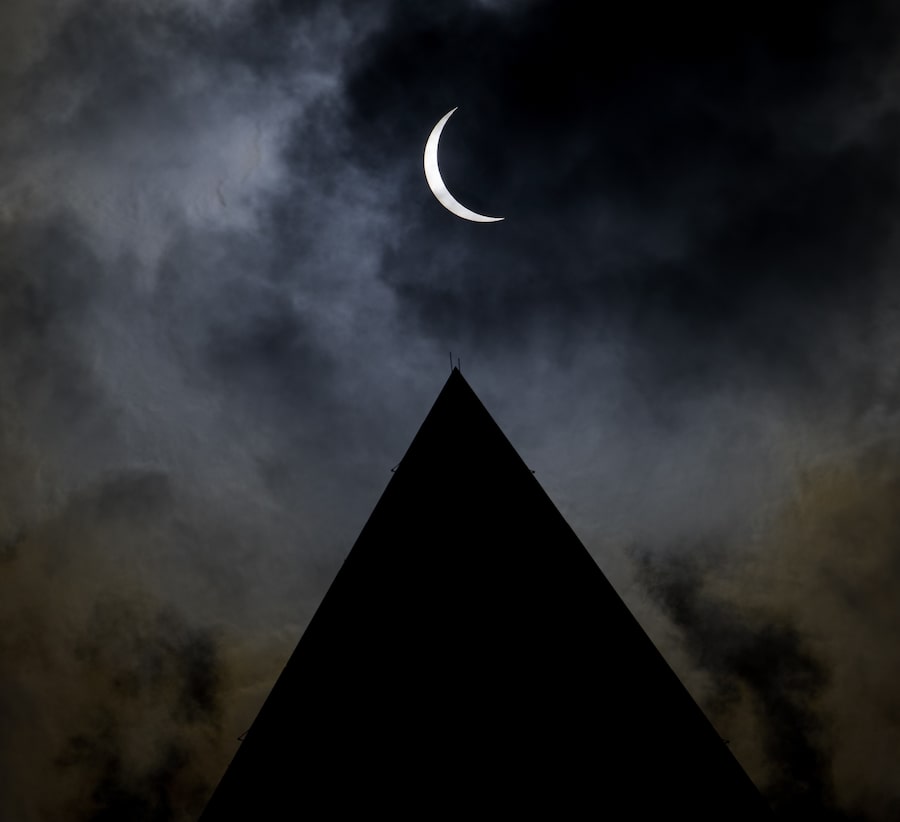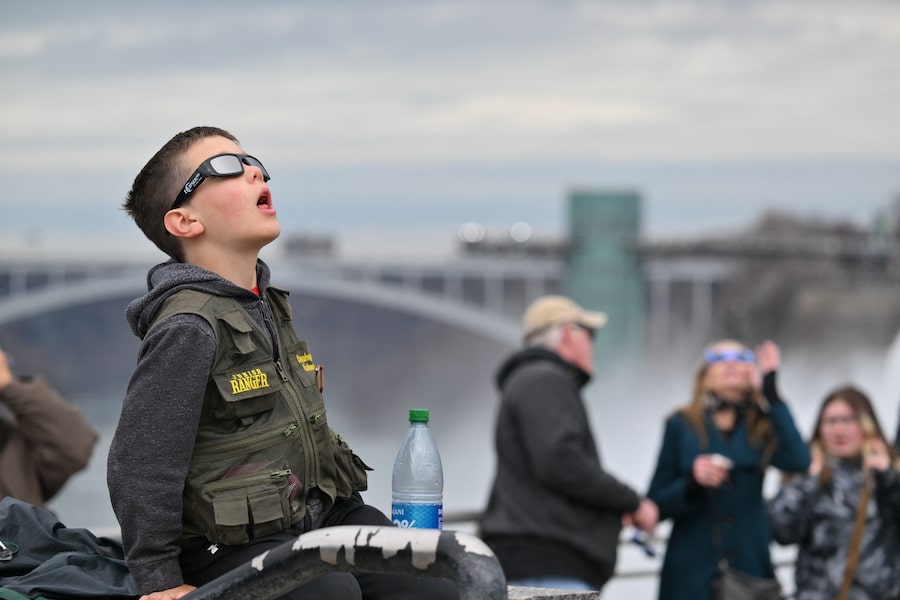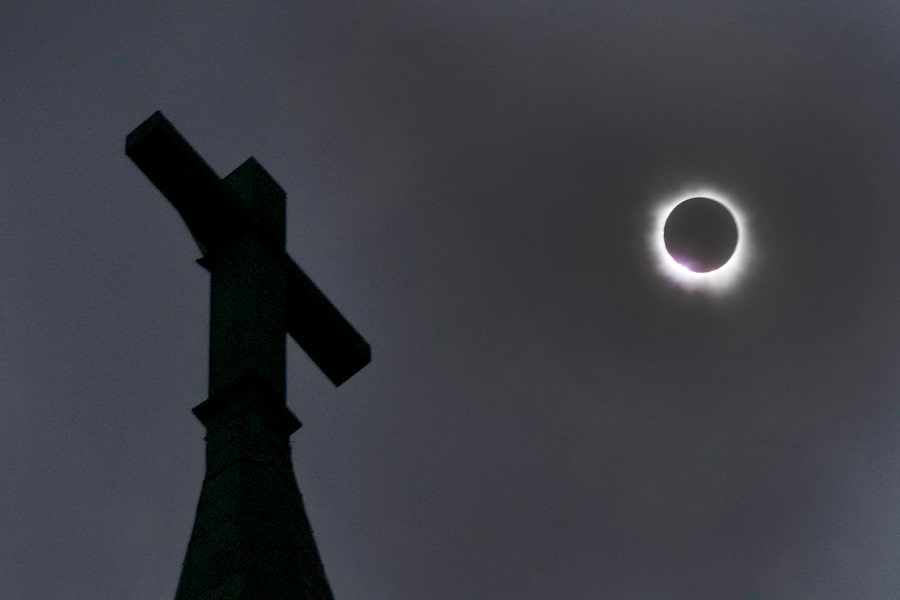It was the show that kept weather forecasters guessing and then graced the fortunate with an unforgettable finale.
On Monday, the moon’s shadow raced across North America as anticipated, dousing daylight and drawing eyes to the sky in every small town and major city along its path – even where clouds obscured the main event.
For those eager to experience the last total solar eclipse that will touch Canada for a generation, it was reason enough to put daily routines aside and make an otherworldly pilgrimage.
For communities that found themselves fated to host the spectacle, it was a chance to throw a party and make hay precisely when the sun wasn’t shining.
All of that came to pass as countless individual eclipse stories played out through the day, with extra drama provided by fickle weather patterns that often seemed calculated to keep eclipse chasers on the back foot.
In places where clouds were absent or where they parted at the key moment, the eclipse offered a rewarding view of the sun’s spiky corona and ruby-red prominences. Where clouds got in the way, it remained a moment of shared wonder at the sheer magnitude of it all.
Totality first reached Canada after 3 p.m. EDT, delighting viewers along Lake Erie’s north shore from Leamington, Ont., onward.

People watch the moon as it approaches the period of totality during a solar eclipse in Montreal on April 8.Evan Buhler/The Globe and Mail
On a side road just east of Nanticoke, Ont., 16-year-old Isaiah Araya, his mother, Shanta, and two school friends, Maanvik Arora and Mercer Elliott, drove in from Kitchener to be in the path of the total eclipse.
As the sun slimmed down to the shape of a fingernail, a rolling gloom appeared in the distance. Moments later, the sun was gone and the corona appeared, flanked by two bright planets, Venus and Jupiter, now suddenly visible in the mid-afternoon sky. Nearby, the silhouettes of bats were seen flitting against a dusky orange horizon.
“I was astonished – blown away,” said Mr. Araya, an amateur photographer who snapped the event, which he said easily exceeded his expectations.
The total eclipse peeked through clouds over Niagara Falls on Monday to give the huge crowds gathered there a view of the stellar phenomenon.
Further east, on the Niagara Peninsula, there was plenty of darkness but often less to see in places where clouds blocked the region’s more than 3½ minutes of totality – the longest for any location in Canada. The situation improved in Eastern Ontario along the Highway 401 corridor where roads were jammed with would-be observers heading south from Ottawa and east from Toronto.
In Montreal, the largest Canadian city on the path of the total eclipse, the atmosphere was jubilant as thousands gathered outside the Montreal Science Centre under mostly clear skies. Cirque du Soleil acrobats juggled and performed contortions before the onset of the moon’s shadow until attention gave way to the show up above. As the moon covered the sun and the total eclipse began, people applauded and shouted with joy.
“It’s so beautiful. … Yes, yes!” exclaimed Jérémy Mwalaba, a Grade 9 student.
Street lights came on in the Old Port, adding to the air of sudden nighttime, with the Montreal skyline as a backdrop.
Afterward, dazed visitors reflected on what they had seen.
“It was like the moon ate the sun!” said eight-year-old Charlotte Masounave.
“It was surreal,” said Nick Leduc. “It made me very conscious of the passing of time, because we only had a minute but it was surprising how quickly it passed. It was like a dream.”
Sherbrooke and the surrounding Eastern Townships had some of the best viewing conditions in the country, in defiance of the usual odds for April weather.
By noon, amateur astronomers in Quintal Park had already erected a small forest of telescopes and oversized camera lenses, while their families enjoyed lunch nearby.
“There are a lot of passionate people. They came to set up early,” said Jasmin Robert, general director of the Federation of Amateur Astronomers of Quebec, who witnessed his first total eclipse Monday.
Stéphane Dubois, who recently retired from the Canadian Armed Forces, has just started to get into chasing eclipses. “We were supposed to go to Texas, but when we saw that in Sherbrooke, the sky would be ideal for all North America, we cancelled the trip and came here,” he said. Virtually no cloud could be seen in the region’s early afternoon sky.
Skywatchers react to viewing the totality phase of a total solar eclipse in Fredericton on April 8.Darren Calabrese/The Canadian Press
Far to the east in Miramichi, N.B., observers saw the sky turn an effervescent grey as totality approached, then the horizon turned a strange hue of cantaloupe as hundreds peered skyward, holding phones up as the moon overtook the sun, to capture the glowing circlet of the sun’s corona.
The crowd cheered while firecrackers shot off in the distance.
Kendra Lee of Halifax made the four-hour drive with her partner and their five-year-old daughter, aptly named Luna O’Brien, to see the moon eclipse the sun in the northern New Brunswick city, which was directly in the middle of the path of totality.
“It was worth it,” Ms. Lee said, adding that she is obsessed with the moon and named her daughter after it. “It’s a once-in-a-lifetime thing.”
Toward the late afternoon, on the south coast of Newfoundland, hundreds gathered on a wharf in the town of Burgeo to celebrate the eclipse with history in mind. About 250 feet offshore, British explorer and cartographer James Cook, known for charting the province, witnessed a solar eclipse on Aug. 5, 1766, christening this outcrop of rocks Eclipse Island.
Under cold, clear skies, Melissa Mills, who works for the town, watched the moon overshadow the sun with a rush of amazement.
“I was just thinking about how wild it is. James Cook was here with his small team and writing down what he was seeing and sending it back to England. And here is everyone 250 years later trying to capture it on their iPhones and cameras,” Ms. Mills said.
Burgeo First Nation Chief Elaine Ingram said Mi’kmaq women and children, dressed in regalia that included moose hide shawls and ribbon skirts, drummed and sang the Gathering Song as people gathered on the wharf overlooking Eclipse Island where she said arrowheads and ulu knives have been found.
“It was awesome,” she said. “The feeling that we had was bringing us closer, back to our ancestors.”



 Ivan Semeniuk
Ivan Semeniuk Eric Andrew-Gee
Eric Andrew-Gee